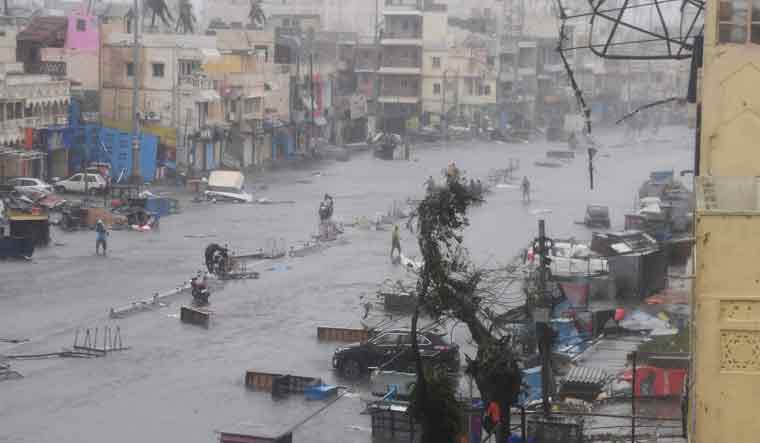Despite the extremely severe cyclonic storm hitting the state and attempting to bring it to smithereens, Odisha has proved efficient in bringing down the number of causalties. This was possible due to the state’s continuous efforts in developing their manpower, skill and infrastructure to ensure that Odisha is disaster-ready.
Since the super-cyclone hit the state back in 1999, causing about 10,000 deaths, Odisha has changed and implemented policies that hugely improved upon their disaster management system.
Their efficient deployment of safety personnel and safety units has resulted in a much better handling of Phailin and Hudhud cyclones that threatened to destroy Odisha in 2013 and 2014, respectively. Phailin cyclone killed 21 people and caused 45 fatalities in total, while Hudhud resulted in 124 fatalities. Loss of human lives is certainly a loss no matter how less. However, the astounding low numbers indicate the success rates of the evacuation procedures.
Cyclone Fani, which hit the shore around 9am on Friday and later deemed as a category-4 equivalent cyclone by Joint Typhoon Warning Center (JTWC), has only managed to cause minimal destruction, thanks to the ever-ready disaster management authority of Odisha.
The Indian authorities were closely observing Fani even before it turned into a cyclone. It was closely observed when it was just a large swirl on the meteorological radar, hundreds of miles away. It was what scientists called a deep depression. A few days later, it turned into the cyclone as how we know it today. Meteorologists had accurately predicted how the cyclone will hit Odisha.
The Odisha government released a 5-page action plan on Thursday morning (way before the cyclone hit Odisha). Odisha's emergency officers stated that they had gone over their evacuation plans a countless number of times.
As soon as the cyclone’s impact was seen in the sea, messages were sent across using loudspeakers asking people to go to the nearest shelter as soon as possible. Police officers moved along with the emergency workers who were asking people to leave. By Thursday night, a day before the cyclone hit Odisha, most shelters were filled.
“The government is usually dysfunctional in cases like this, but the whole mobilisation was quite impressive,” The New York Times quoted a former naval officer as saying. “Evacuating a million people in three or four days and providing them with not just shelter, but also food is a big achievement in such a short time.”
For a poor state in a developing country, the efficiency of the disaster management authority, is highly commendable.
also read
- Odisha: Theatre artist’s ‘raw’ performance in Ramayana play lands him in jail; kills pig, eats flesh onstage
- Cyclone Fengal weather updates: Bodies of 7 killed in Tamil Nadu landslide recovered; heavy rain in Kerala, Karnataka
- Cyclone Fengal unleashes chaos in Tamil Nadu; Villupuram worst affected
- Cyclone Fengal weakens; Puducherry receives highest rainfall in 30 years
"A record of 1.2 million people were evacuated in 24 hours, 3.2 lakh from Ganjam, 1.3 lakh from Puri and almost 7,000 kitchens catering to 9,000 shelters were made functional overnight. This mammoth exercise involved more than 45,000 volunteers," Odisha CM Naveen Patnaik said. He added that according to the government's reports, deaths are in single digits.
The UN agency for disaster reduction has commended the Indian Meteorological Department’s accuracy in predicting the cyclone’s every move and impact. The “pinpoint accuracy” was the reason early warning were given out in time and evacuation procedures took place efficiently. The UN was in praise of Odisha for minimum casualties and timely evacuation.
India's zero casualty approach to managing extreme weather events is a major contribution to the implementation of the #SendaiFramework and the reduction of loss of life from such events. I look forward to hearing more about #CycloneFani at the #GP2019Geneva May 13-17. https://t.co/AqwCwNRjxE
— Mami Mizutori (@HeadUNISDR) May 3, 2019
With climate change increasing the possibilities of extreme weather phenomena, disaster management authorities can never be too prepared or cautious. It is high-time that efficient disaster management is made a crucial component of every state project. The Odisha State Disaster Management Authority is a model for other such bodies to follow suit.



